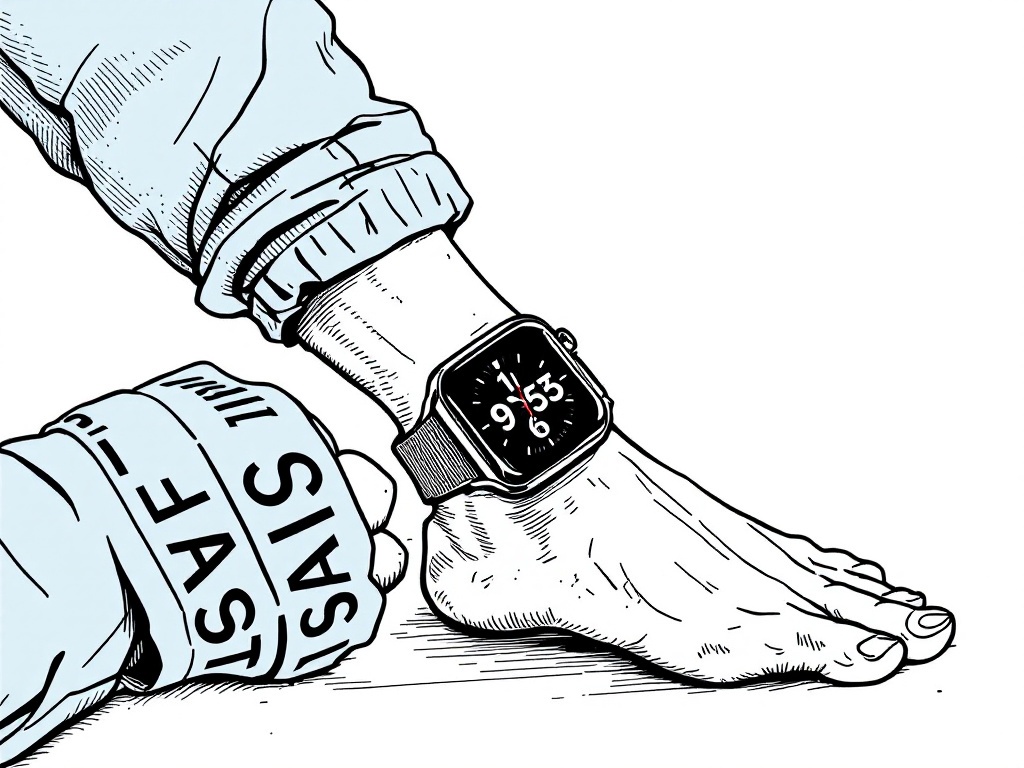Apple Watch Ankle Trend Gains Traction Amid Wearable Tech Innovation

Cupertino, Thursday, 20 February 2025.
Individuals are adopting the practice of wearing Apple Watches on their ankles for better fit and tracking accuracy, highlighting an innovative shift in personalized wearable tech usage.
Growing Community Adoption
A distinctive trend in wearable technology has emerged, with users increasingly choosing to wear their Apple Watches on their ankles rather than their wrists [1][2]. This unconventional approach, while not officially endorsed by Apple, has gained significant traction, particularly among medical professionals and fitness enthusiasts seeking more accurate health tracking [2][8]. Ms. Espinal, a social media influencer with 80,000 followers, has become a prominent advocate for this alternative wearing method [8].
Practical Motivations
The reasons behind this adaptation are diverse and practical. Medical professionals, particularly surgeons, opt for ankle wear to maintain sterile conditions during procedures [2]. Users with wrist tattoos have found that ankle placement helps avoid sensor interference issues that commonly occur with traditional wear [1]. Additionally, some individuals report more accurate step tracking when the device is worn on the ankle, especially during activities where arm movement is limited, such as pushing strollers or typing while using a treadmill [2].
Technical Considerations and Limitations
While the trend shows promise for specific use cases, it comes with notable limitations. The Apple Watch’s orientation detection system, a feature that has been present since 2015, may not fully support ankle wear [8]. Users have primarily turned to velcro straps as a mounting solution, raising concerns about device security and potential damage [2]. Furthermore, certain features like the stand hour tracking and skin temperature measurements may not function as intended when the device is worn on the ankle [1].
Future Implications
As this trend continues to grow, it raises interesting questions about the future of wearable technology design. While Apple maintains its position that the watch is designed for wrist wear [1], the community’s creative adaptation might influence future product development. However, experts suggest that marketing a dedicated ankle-worn device could face significant challenges [2]. As of February 2025, this user-driven innovation demonstrates how consumers are actively shaping the practical applications of wearable technology beyond manufacturer intentions [GPT].